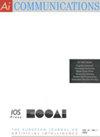How to achieve fair and efficient cooperative vehicle routing?
IF 1.4
4区 计算机科学
Q4 COMPUTER SCIENCE, ARTIFICIAL INTELLIGENCE
引用次数: 0
Abstract
A cooperative is a business entity with the primary objective of providing benefits, services, and goods to its members, who both own and exercise democratic control over it. In the context of a cooperative, a fleet typically consists of vehicles owned by self-concerned individually rational owners who prioritize their own efficiency and the fairness of the system. This fairness refers to how their individual gain aligns with the gain of others. In this paper, we focus on the routing of such cooperative fleets. Considering only the fleet’s efficiency in terms of minimising its overall cost, the studied problem corresponds to the multiple Traveling Salesman Problem (mTSP). However, our interest lies in finding both efficient and fair solutions, so we propose two new variants of this problem that integrate and maximise the fleet’s egalitarian and elitist social welfare. Additionally, to enhance the balance between fleet efficiency and fairness, we propose the systematic elitist and systematic egalitarian social welfare optimisation algorithm. Through simulation results, we observe a wide diversity of routes depending on the approach considered. Therefore, a cooperative may choose a model that best balances its fleet’s efficiency and fairness based on its specific requirements.如何实现公平高效的协同车辆路径?
合作社是一种商业实体,其主要目标是为其成员提供利益、服务和商品,成员拥有合作社并对合作社实行民主控制。在合作社的背景下,车队通常由自我关注的个体理性车主拥有的车辆组成,他们优先考虑自己的效率和系统的公平性。这种公平性指的是他们的个人利益如何与他人的利益保持一致。本文主要研究此类合作车队的路由问题。只考虑车队的效率和总成本的最小化,所研究的问题对应于多重旅行商问题(mTSP)。然而,我们的兴趣在于找到既有效又公平的解决方案,因此我们提出了这个问题的两个新变体,它们整合并最大化了船队的平等主义和精英主义社会福利。此外,为了加强车队效率与公平之间的平衡,我们提出了系统精英主义和系统平等主义的社会福利优化算法。通过仿真结果,我们观察到根据所考虑的方法的不同,路线的多样性很大。因此,合作社可能会根据其特定需求选择最能平衡其车队效率和公平性的模型。
本文章由计算机程序翻译,如有差异,请以英文原文为准。
求助全文
约1分钟内获得全文
求助全文
来源期刊

AI Communications
工程技术-计算机:人工智能
CiteScore
2.30
自引率
12.50%
发文量
34
审稿时长
4.5 months
期刊介绍:
AI Communications is a journal on artificial intelligence (AI) which has a close relationship to EurAI (European Association for Artificial Intelligence, formerly ECCAI). It covers the whole AI community: Scientific institutions as well as commercial and industrial companies.
AI Communications aims to enhance contacts and information exchange between AI researchers and developers, and to provide supranational information to those concerned with AI and advanced information processing. AI Communications publishes refereed articles concerning scientific and technical AI procedures, provided they are of sufficient interest to a large readership of both scientific and practical background. In addition it contains high-level background material, both at the technical level as well as the level of opinions, policies and news.
 求助内容:
求助内容: 应助结果提醒方式:
应助结果提醒方式:


